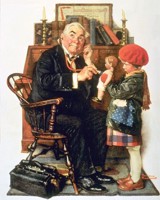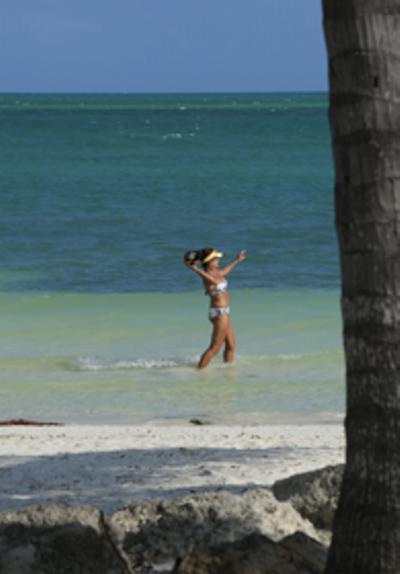I’m on the road again, traveling with even more electrical load for the truck and even fewer places to plug in. I may have to rethink this.
Back in an earlier Road Trip episode I mentioned adding a freezer to the truck inventory.
“It’s nice to be able to carry food on long trips and I’ve gotten tired of the ice makers in motels. I will run the freezer on the truck system when I have to and on plug in to a handy outdoor outlet where I can.”
It’s a 12VDC or 110VAC unit that needs a little extra cooling so I also added a fan and a nice, 600W inverter to run that.
For this trip, I bought a 110VAC compact refrigerator and tested it on the inverter. It worked fine until I got to the mainland. By then, the inverter was running neither the frig nor the fan.
Oops.
The frig draws less than a lightbulb running but it apparently has a starting surge the size of Niagara Falls.
I bought a bigger inverter. That one didn’t work at all. Took it back. Found a kilowatt inverter guaranteed to run the frig and the fan and one section of Yankee Stadium (really — that’s what the salesman said).
It made it out of the parking lot before I heard the sizzle and smelled the smoke.
So I went back to the old standby: ice. The 110VAC compact refrigerator keeps pretty nice and cold with a couple of canisters of ice innit.
That’ll work, I figured.
Except the first couple of motels had no outdoor plug for my truck. I really need to run the fan and both coolers — and particularly to recharge the “house” batteries — overnight every night.
I used the 315 HP generator GMC graciously supplied with the (new)(white) truck, idling away its time like a bus or emergency vehicle but at idle, even with the air and lights and other truck services turned off, it doesn’t quite keep up with the load. By the time I got to the Chrysler Museum of Art in Norfolk, I was feeling some desperation.
The Paris of Toulouse-Lautrec is an exhibit of the artist’s radical, bold, and often outrageous posters and illustrations, particularly for the Moulin-Rouge and the angry Aristide Bruant.
It’s a wonderful museum built originally around the collection Walter P. Chrysler Jr. had assembled over his lifetime. Mr. Chrysler was one of the country’s leading art collectors and benefactors; his father, Walter Sr., founded the Chrysler Corporation.
I went for Henri Marie Raymond de Toulouse-Lautrec-Monfa but knew I would spend more time on something there. I left the truck idling in the parking lot.
The welcoming young lady at the ticket desk agreed that my question was one she had never heard before, “Do you have somewhere I can plug in my truck.”
She called the Maintenance Chief who arrived with an extension cord even longer than mine and we walked out to the lot.
“Oh, good,” he said when he saw I had backed up to the generator room. In the interest of full disclosure, I didn’t know it was the generator room. I just thought it was about the only shady spot in the lot. A couple of minutes later, the back of the truck was humming nicely as the frig and freezer ran and the big charger purred. The front of the truck was blissfully silent.
I saw too much to catalog that afternoon. Play Me, I’m Yours entranced me. The public piano art project put pianos out in public and invited people to play. The Japanese prints companion exhibit to Toulouse-Lautrec looked at the woodblock prints that inspired him and so many other French artists and reminded me of the prints Uncle Joe Clark brought back from Japan. The paintings of Thomas Hart Benton and the Navy captured an heroic period in American history. And I spent quite a while with Glen McClure’s magnificent enlargements of the Shipyard Workers of Hampton Roads. The Norfolk photographer shot 9,000 frames of 400 of the men and women who keep our coastal economy literally afloat.
The Chrysler also hosted the 2017 Glass Art Society conference. We watched Clare Belfrage prepare for her demonstration from the first gather.
I learned stuff and saw beauty.
When the Chrysler’s Glass Studio kicked us out after the main museum had closed, I hustled back to the parking lot but the cold stuff was still just humming along happily.
“Just roll the cord up when you leave,” the Maintenance Chief had said. “I’ll ask the security folks to put it away.”
I did.
A great museum turned into a life-saver for this traveler. Thank you Chrysler.

 That first car was a sad, 8-year old
That first car was a sad, 8-year old  “Some” mechanics will need to offset the $1,500-2,000 cost of new equipment, including a tablet computer with a camera to photograph your license plate, VIN plate, underbelly, and any repair that needs to be made, that uploads all that vehicle data to the state. The system will also make the inspection take longer to perform. Mechanics have to charge by the hour.
“Some” mechanics will need to offset the $1,500-2,000 cost of new equipment, including a tablet computer with a camera to photograph your license plate, VIN plate, underbelly, and any repair that needs to be made, that uploads all that vehicle data to the state. The system will also make the inspection take longer to perform. Mechanics have to charge by the hour.
